Rule 28's Aero Base Layer is exactly that – a baselayer designed to improve your aerodynamic efficiency on the bike.
While leading riders and teams have frequently used aerodynamic baselayers in elite time trials in recent years, the technology is now creeping into road racing as well.
Despite sponsor commitments, Rule 28's Aero Base Layer is being worn by some of the WorldTour's top riders, including two-time Tour de France champion, Tadej Pogačar.
Yet, given it’s designed to be worn underneath cycling jerseys and skinsuits, how does the Rule 28 Aero Base Layer manage to affect the airflow over a rider? Let’s take a look.

Boundary layer manipulation
Similar to the dimples on a golf ball, the Rule 28 Aero Base Layer is designed to manipulate the boundary layer of airflow around parts of the rider’s body.
In this case, the striped fabric ridges on the sleeves bulge through the fabric of your skinsuit or jersey and ‘trip’ the airflow from laminar (smooth) to turbulent (messy).
This creates a turbulent boundary layer of airflow around the rider’s arm, which reduces the size of the low-pressure wake behind the arm. In turn, this reduces your aerodynamic drag.
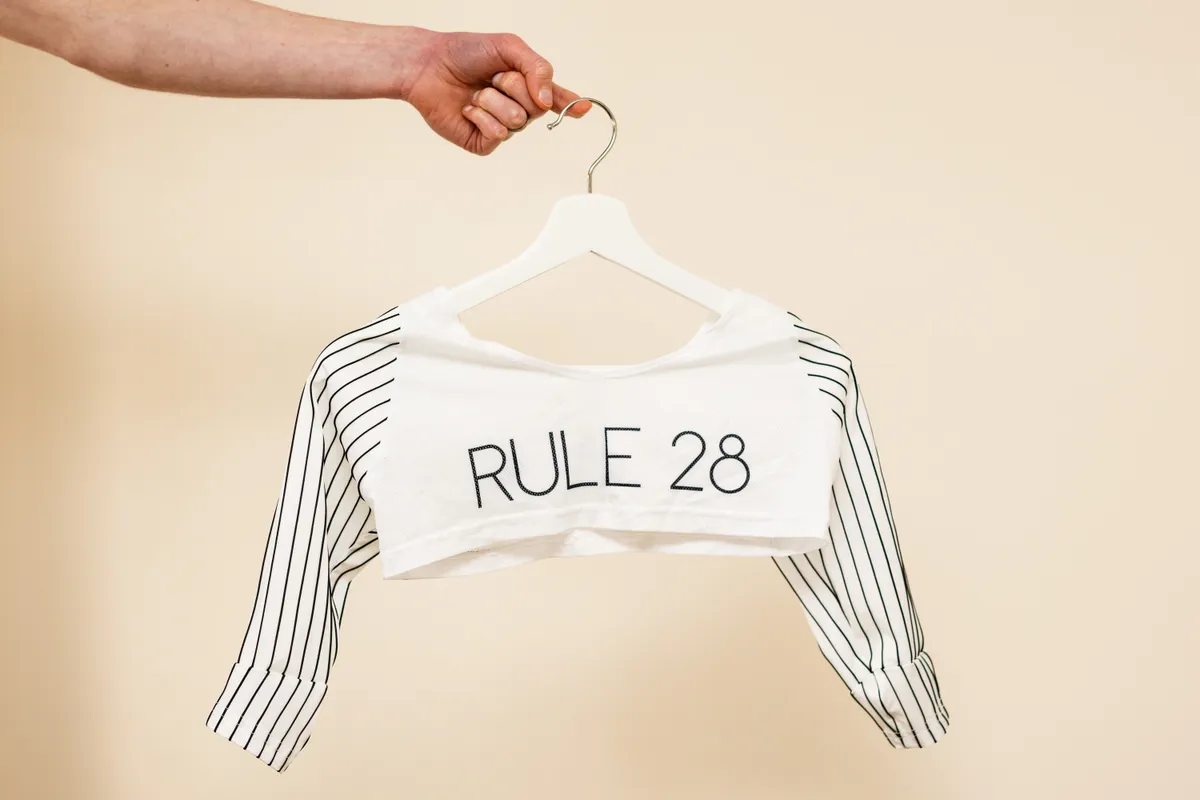
It’s much the same concept as with aero socks or other pieces of aerodynamic cycling kit.
The Nopinz Flow skinsuit, for example, uses a number of different textured fabrics to produce similar effects.
That Nopinz has recently announced its Hypersonic range – an updated skinsuit based around an ‘aero base layer plus skinsuit’ concept – would appear to confirm Rule 28 is on to something.
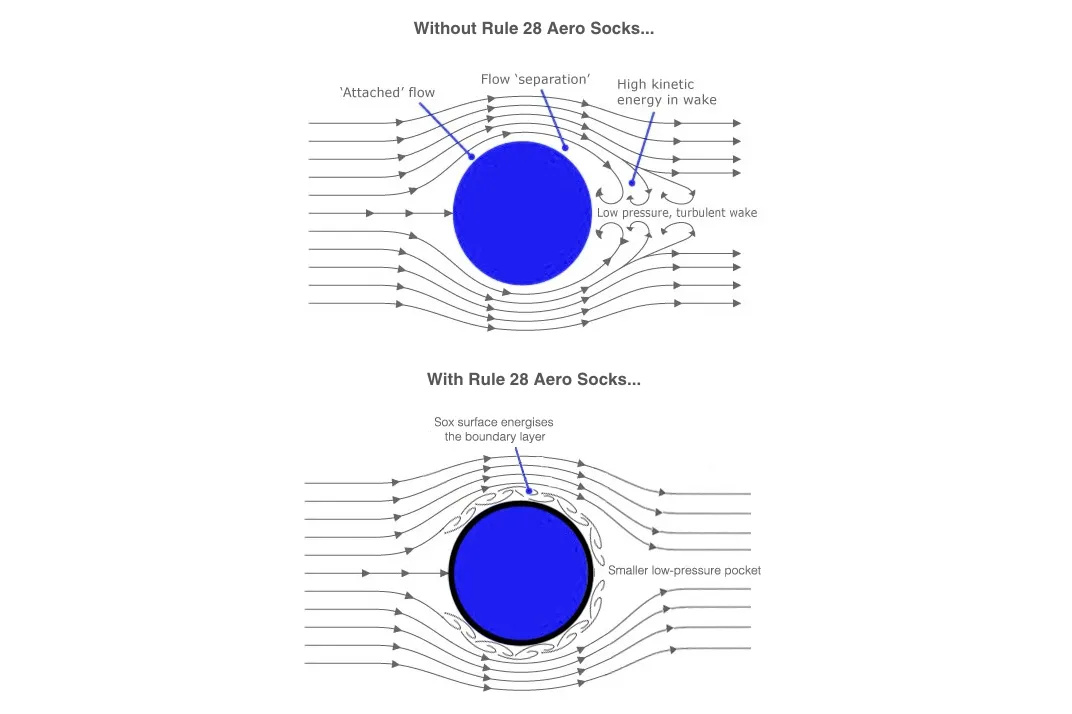
As you may have guessed, the type of fabric used on the sleeve worn over the baselayer is crucial to maximising the gains from this effect.
Given this, Rule 28 has also designed a new skinsuit – the Neo Suit 1.1 – that's designed to be worn in tandem with the baselayer.
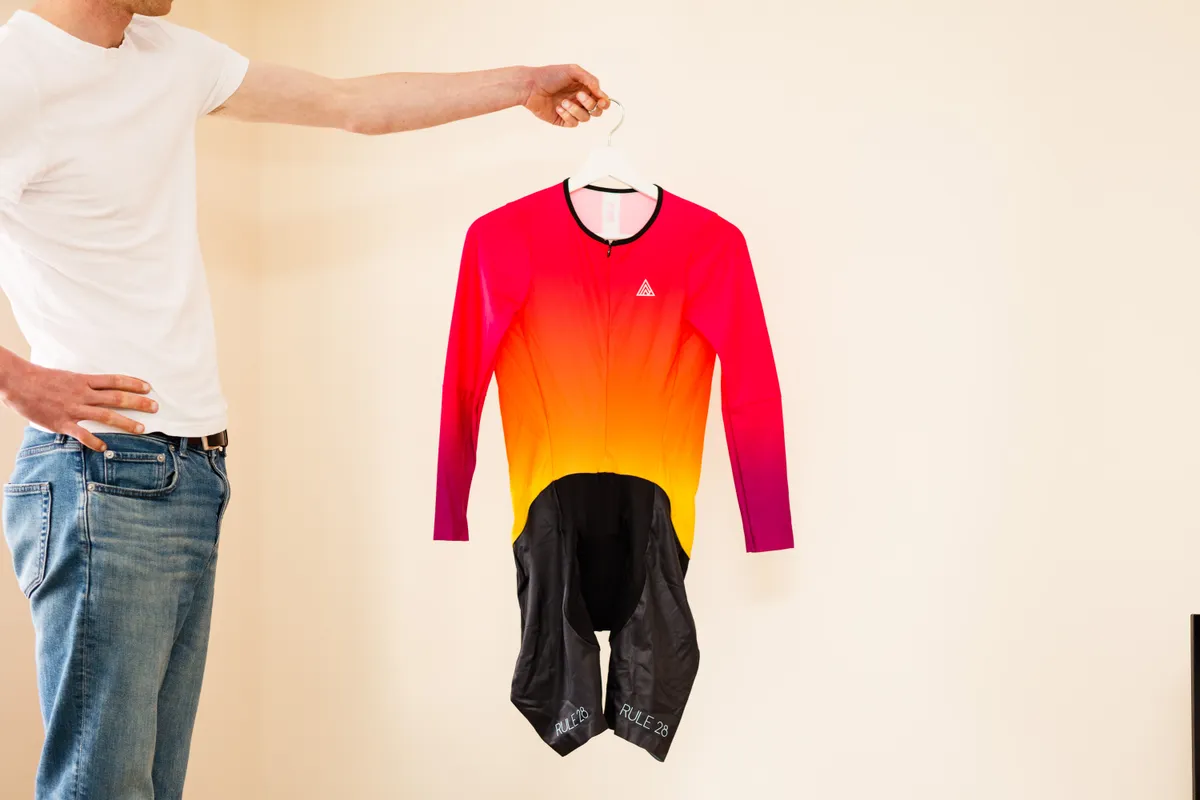
Compared to most skinsuits, the fabric on the sleeves of the Neo Suit 1.1 is noticeably thinner.
This enables the ridges on the sleeves of the baselayer to bulge through and create the desired surface roughness.
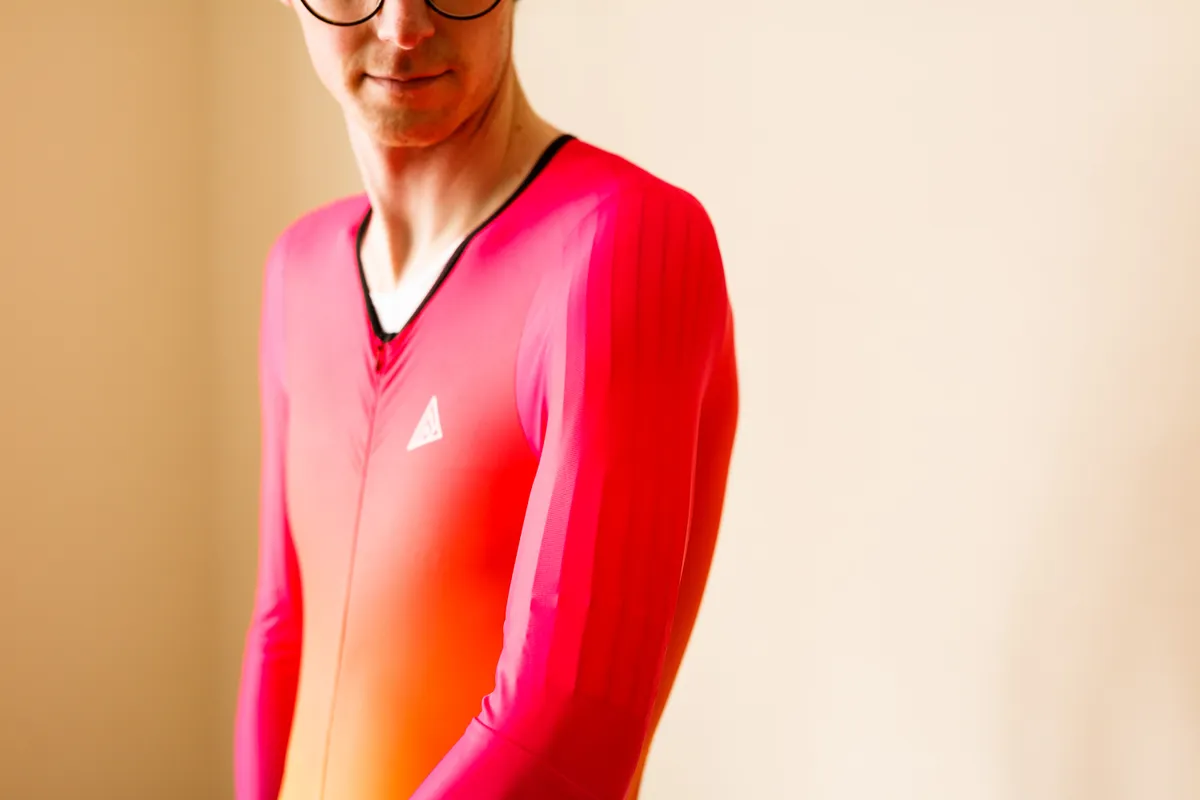
In terms of jerseys and other skinsuits, Rule 28 told us it believes anything with mesh or light textures on the sleeves should also work well with the Aero Base Layer (in theory, specific combinations would need to be tested properly to be sure).
This is because these would allow the baselayer to manipulate the surface of the fabric sitting on top of it as intended.
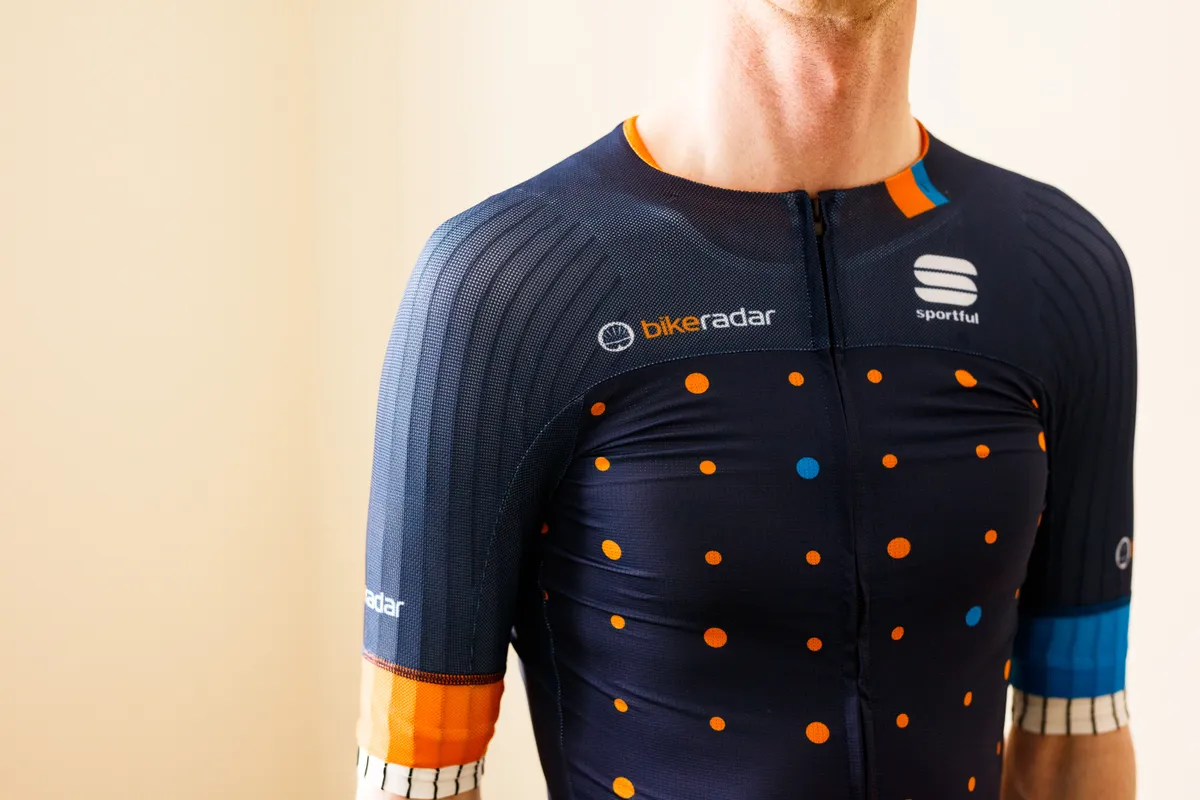
In contrast, Rule 28 says sleeves with striped aero fabrics will likely interfere with the baselayer stripes and could even be more draggy as a result.
You’re unlikely to see a drag reduction from wearing it beneath a thick winter cycling jacket, either.
What are the gains?
In order to test the effectiveness of the Aero Base Layer and Neo Suit, Rule 28 tested both against its previous flagship skinsuit, the TT Skinsuit 1.0 (which used a striped fabric on the sleeves and shoulders), at the Silverstone Sports Engineering Hub wind tunnel.
This is the same facility we recently used to test the best-value aero upgrades.
It was tested at speeds from 35 through to 60kph, and at 0 and 5 degrees of yaw.
At 45kph (a speed typical of both pro road races and amateur time trials), the Neo Suit paired with the Aero Base Layer saved 2.8 watts at 0 degrees of yaw, and 7.5 watts at 5 degrees of yaw.
| YAW 0 | ||||||
|---|---|---|---|---|---|---|
| Speed | 35kph | 40kph | 45kph | 50kph | 55kph | 60kph |
| R28 2021 TT Suit (watts) | 133.3 | 194.7 | 272.3 | 371.6 | 494.4 | 637.4 |
| R28 Neo Suit + Aero Base Layer (watts) | 129.7 | 190.6 | 269.5 | 365 | 487.4 | 617.1 |
| YAW 5 | ||||||
| Speed | 35kph | 40kph | 45kph | 50kph | 55kph | 60kph |
| R28 2021 TT Suit (watts) | 136.1 | 197.2 | 275.4 | 369.4 | 490.3 | 629.7 |
| R28 Neo Suit + Aero Base Layer (watts) | 133.7 | 193.6 | 267.9 | 362.4 | 473.5 | 607.6 |
Marginal gains, then (albeit versus a bar Rule 28 would argue was already set very high). However, when it comes to racing, every little helps.
Importantly, the cropped design of the baselayer – it’s just two sleeves connected by two small strips of fabric – means there’s little reduction in ventilation to your core as a result of wearing the baselayer.
As a result, there isn’t a major trade-off between heat management and aerodynamics in hot weather.
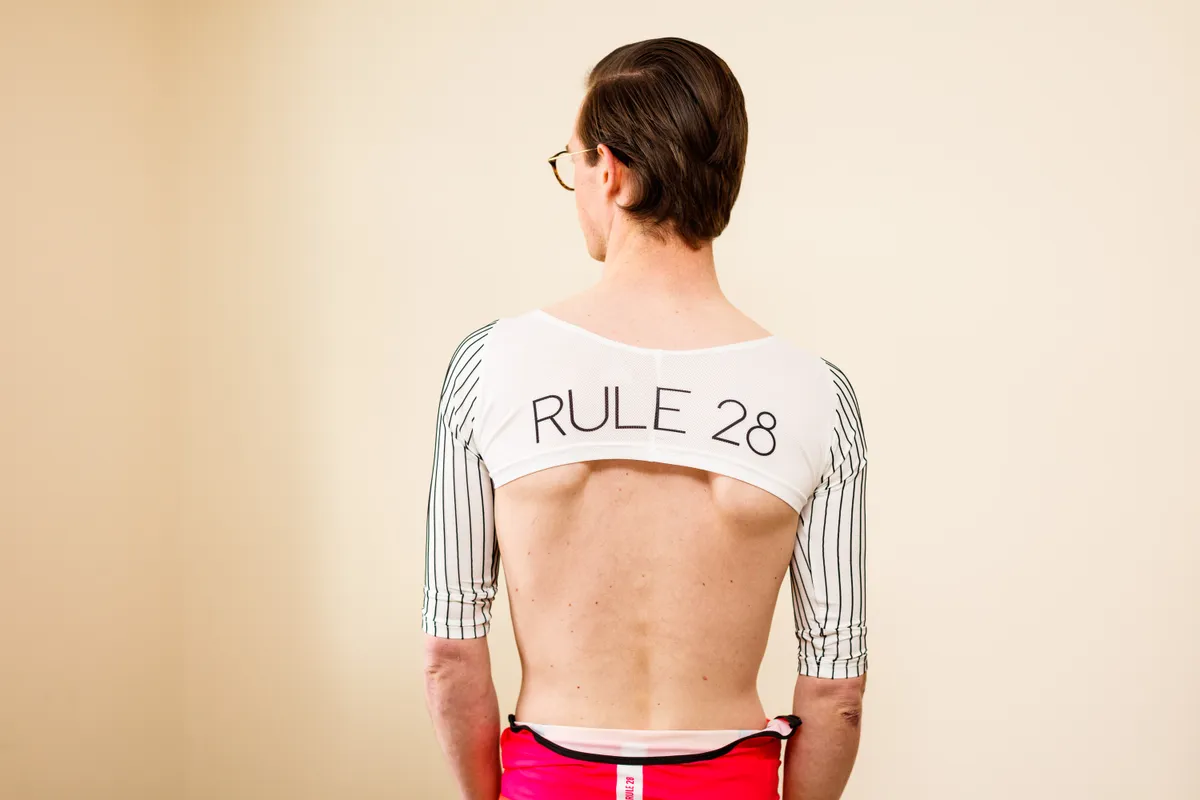
Why did Rule 28 make a baselayer?
At this point, you might be wondering why Rule 28 decided to incorporate drag-reducing stripes onto a baselayer, instead of onto the arms of a skinsuit or jersey.
The reason is simple (and perhaps predictable): it’s a quirk of the UCI rules.
After a number of controversies surrounding the skinsuits being used by some of the sport’s top teams in 2017 (particularly, Team Sky dominating the opening time trial at that year’s Tour de France using Castelli’s Body Paint 4.0 speedsuit), the UCI updated its infamous technical regulations. The change outlawed “surface roughness modifications” larger than 1mm from January 2019.
The addition of any “rigid structure” or “silicon” (as in the case of Endura’s Drag2Zero Encapsulator skinsuit) to clothing was also banned.
As a result, a number of high-end skinsuits were put on the chopping block, and manufacturers went back to the drawing board during the 2018 season.
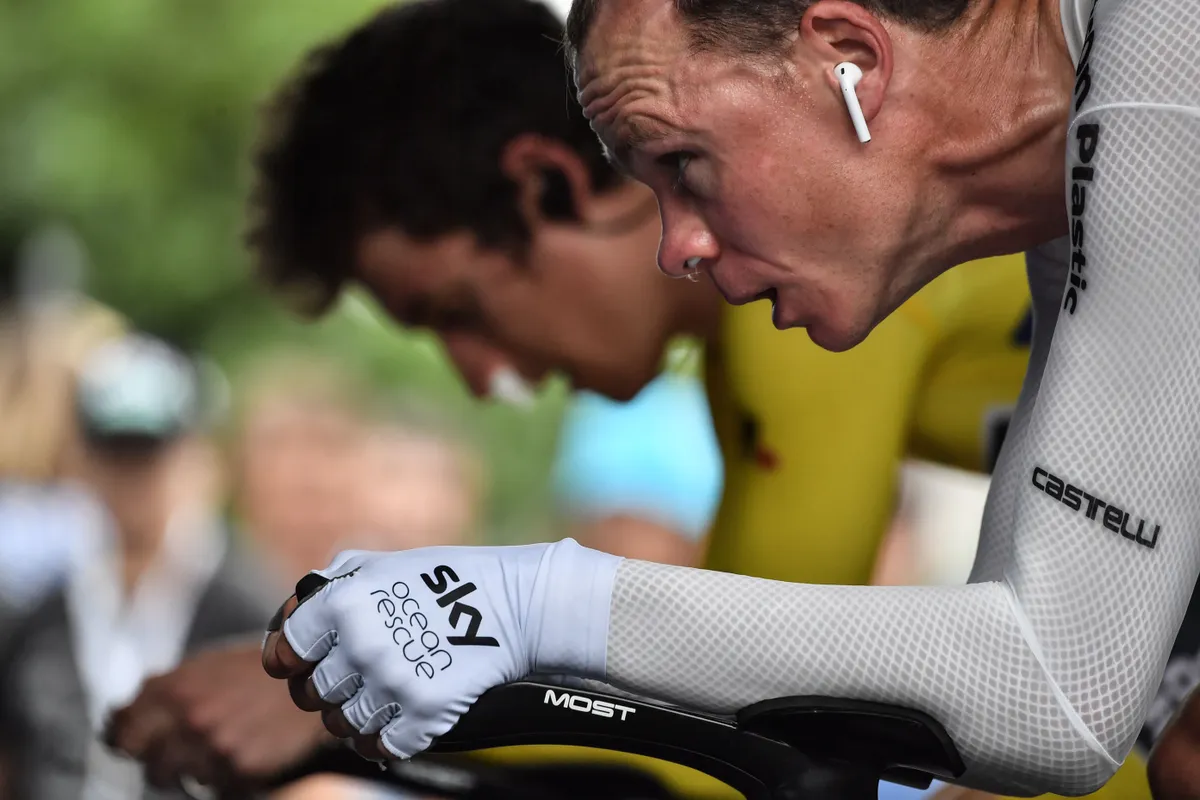
Unsurprisingly, given its flagship skinsuit fell foul of the updated rules, Castelli was one of the first to innovate in this area.
As far as we can tell, Team Sky riders (including Geraint Thomas and Chris Froome) debuted Castelli’s Body Paint 4.X speed suit at the 2018 Tour de France, with a textured baselayer worn underneath.
Since then, the type of the texture or ridges on the baselayer has seen continued development. A consensus (among Castelli, Rule 28 and Nopinz, at least) now appears to be settling on prominent vertical stripes, however.
Rule 28's baselayer conforms to the current UCI rules because the stripes have a width and height of 1x1mm, and though they may look rigid at a glance, they’re actually flexible fabric piping.
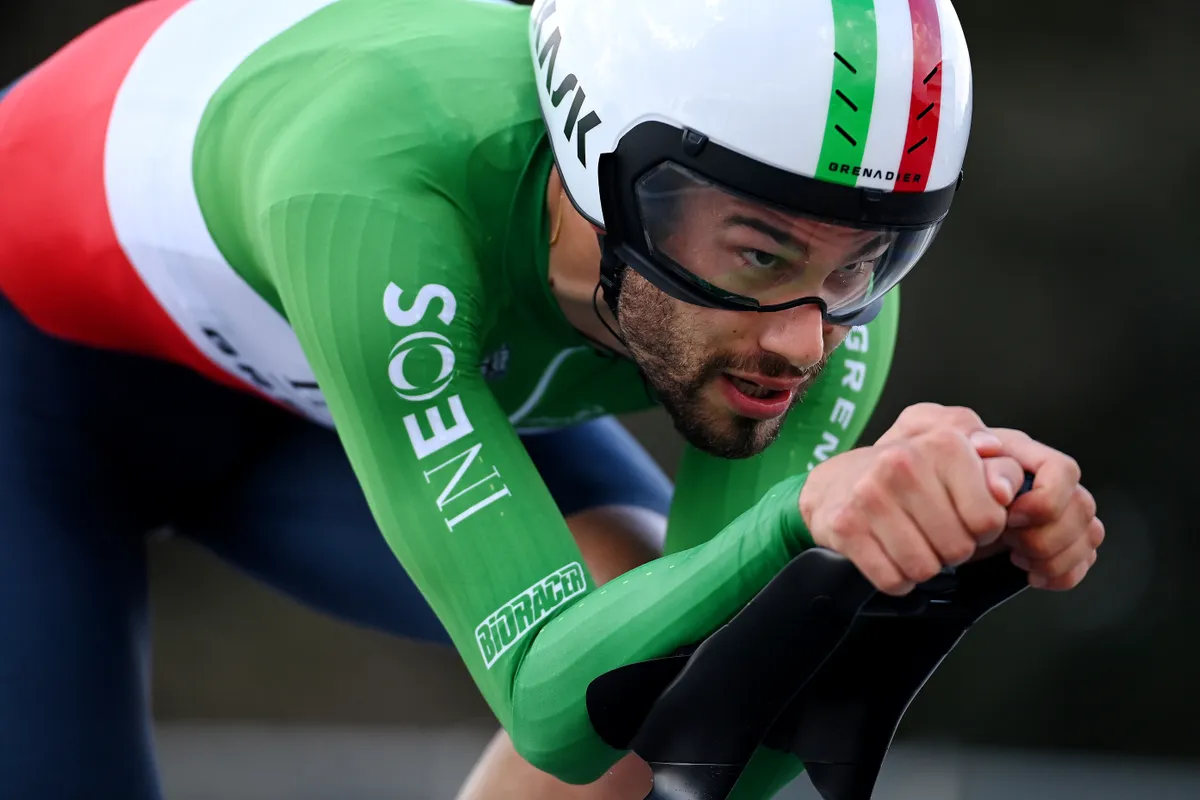
How much does the Rule 28 Aero Base Layer cost?
The Rule 28 Aero Base Layer costs £149.99, or can be purchased as a bundle with the Neo Suit skinsuit (£300) for £420.
It’s fair to say that’s not cheap, but it's roughly inline with comparable options from competitors.
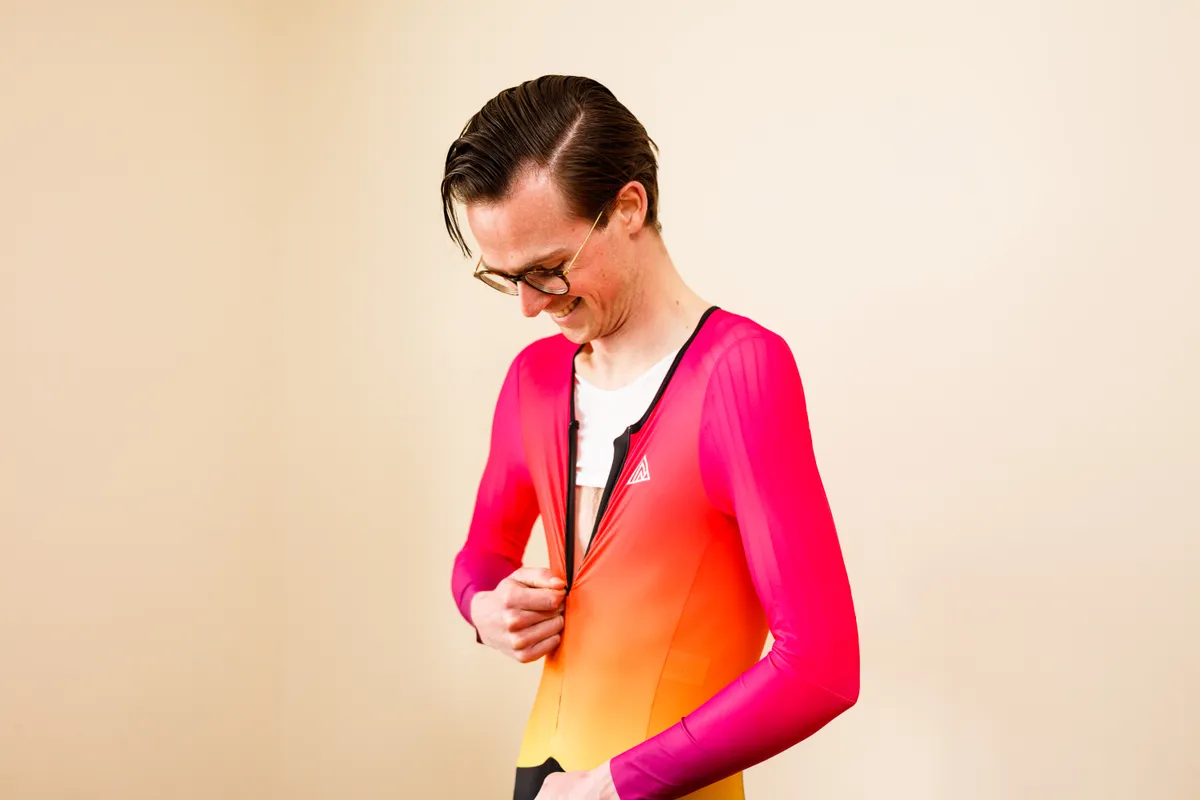
The latest Nopinz Hypersonic skinsuit and baselayer, for example, cost £275 and £139.99 each, for a total price of £414.99.
Castelli’s Body Paint 4.X skinsuit costs £275, but its aero baselayer isn’t currently listed as part of its collection.
Rule 28 also makes a version of the Neo Suit for road racing (aptly named the Road Race Neo Suit), with two rear pockets. This costs £300 and is also designed to be paired with the Aero Base Layer.
Both the time trial and road racing Neo Suits are available in men’s and women’s specific cuts, while the Aero Base Layer is a unisex item.

